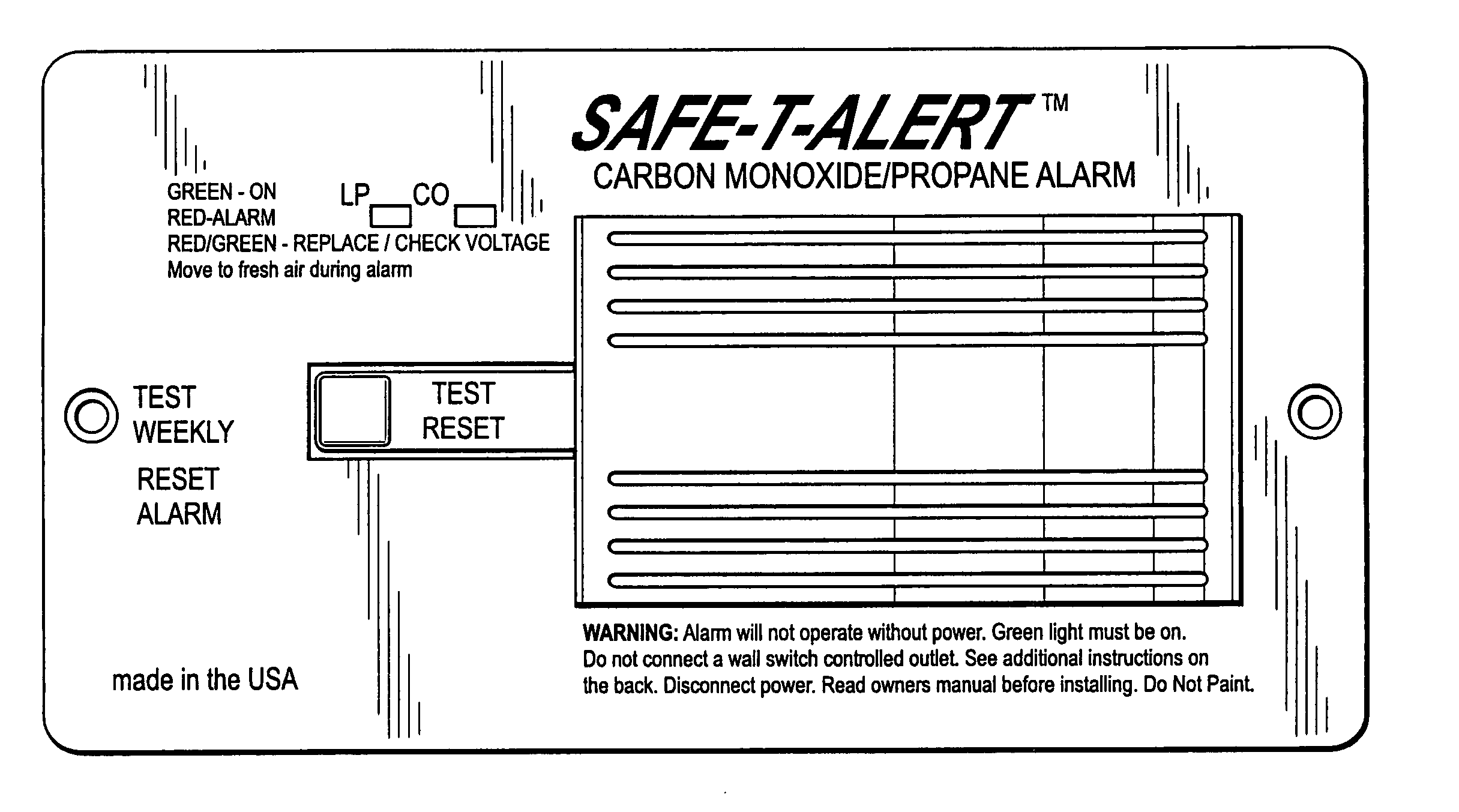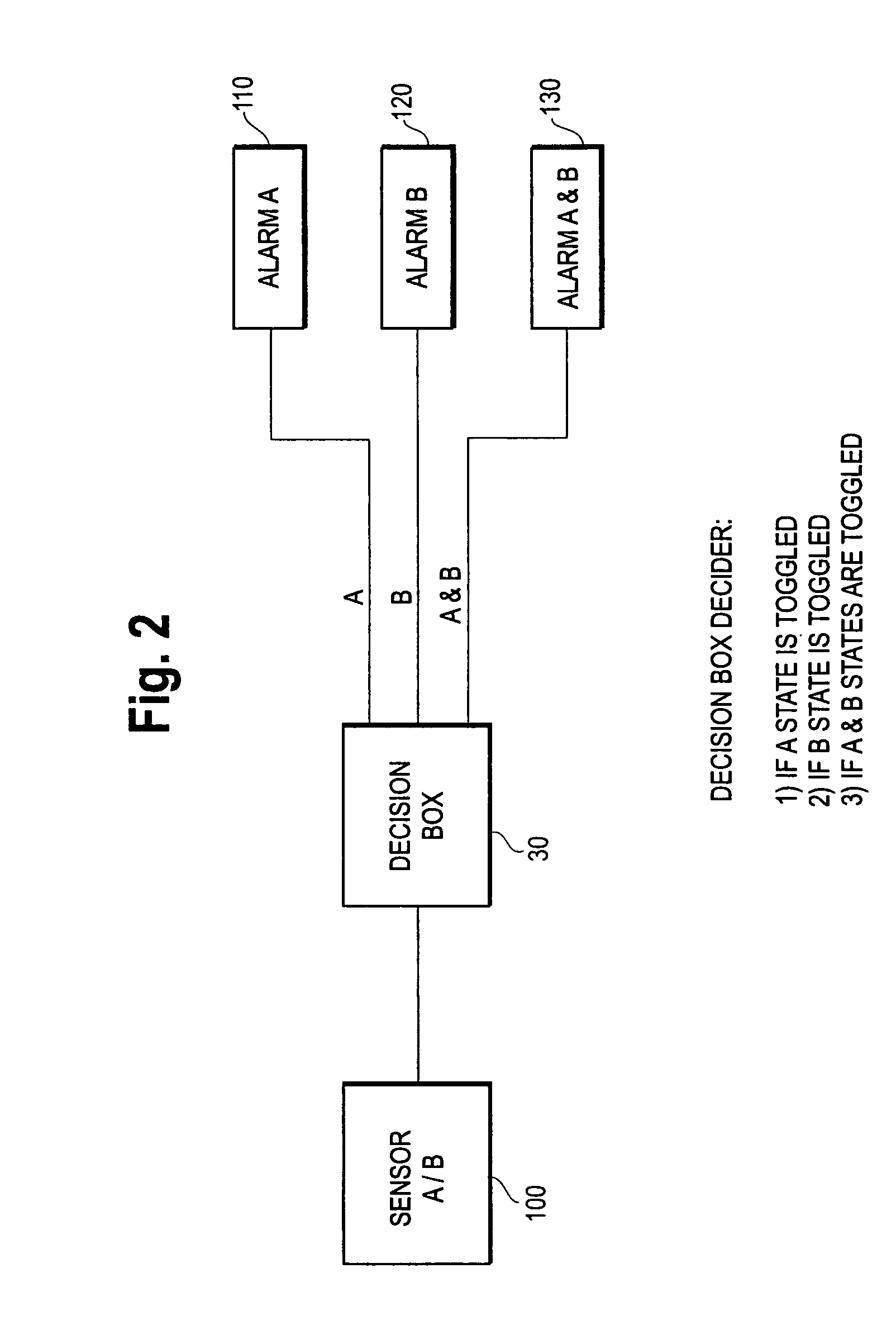Combination airborne substance detector
a detector and airborne substance technology, applied in chemical methods analysis, instruments, fire alarms, etc., can solve the problems of imposing additional space requirements, visual unappealing, and the inability to detect secondary substances in typical combination detector systems
- Summary
- Abstract
- Description
- Claims
- Application Information
AI Technical Summary
Benefits of technology
Problems solved by technology
Method used
Image
Examples
Embodiment Construction
)
[0036]FIG. 1 illustrates a functional diagram of an embodiment of the present airborne substance detector apparatus. A first module 10 can be a sensing device for a first airborne substance. A second module 20 can be a sensing device for a second airborne substance, different from that being sensed by the first module 10. The first and second modules 10, 20 electronically communicate with a decision box 30. The decision box 30 continuously and independently communicates with the first and second modules 10, 20 monitoring for signal fluctuations indicative of the presence of target airborne substances. Continuous monitoring of the decision box 30 can include checking for signal input fluctuations on an intermittent basis in periods of approximately every few seconds. Additional modules may electronically communicate with the decision box 30 for detecting additional conditions. The first module 10, second module 20, and additional modules, if any, can also constitute (that is, form p...
PUM
 Login to View More
Login to View More Abstract
Description
Claims
Application Information
 Login to View More
Login to View More - R&D
- Intellectual Property
- Life Sciences
- Materials
- Tech Scout
- Unparalleled Data Quality
- Higher Quality Content
- 60% Fewer Hallucinations
Browse by: Latest US Patents, China's latest patents, Technical Efficacy Thesaurus, Application Domain, Technology Topic, Popular Technical Reports.
© 2025 PatSnap. All rights reserved.Legal|Privacy policy|Modern Slavery Act Transparency Statement|Sitemap|About US| Contact US: help@patsnap.com



